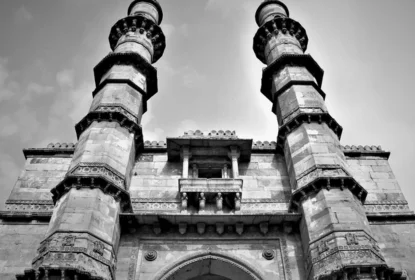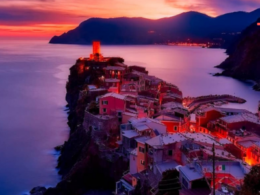Kankaria Lake
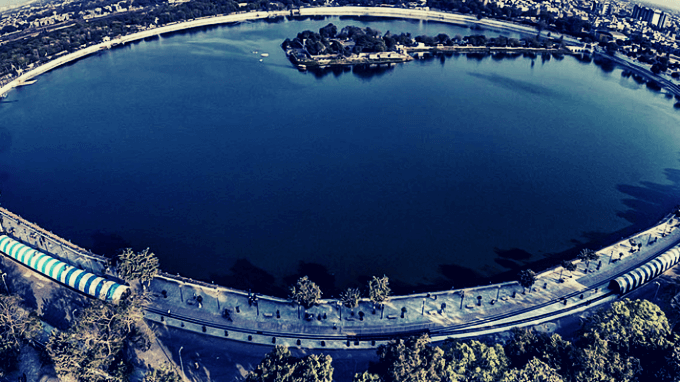
Kankaria lake is the second largest lake in Ahmedabad and is located in the Maninagar in the south-eastern part of the city. It is the best-suited place for the full-day trip as you get multiple tourist spots like Zoo, Kids City, Toy Train, Hot air balloon ride, water-based rides, and numerous rides at this one place. You get to eat fantastic food too. The famous Kankaria Carnival is also celebrated here during New Year.
Must things to do at kankaria lake
- Kankaria Zoo
- Baltika
- Nagina Vadi
- Amusement Park
- Kids City
- Toy Train
- Balloon Ride
- Food Court
Timings: Kankaria Lake is open on all days of the week except Mondays. It opens from 4:00 am – 8:00 am and then reopens again from 9:00 am – 10:00 pm.
Swaminarayan Temple
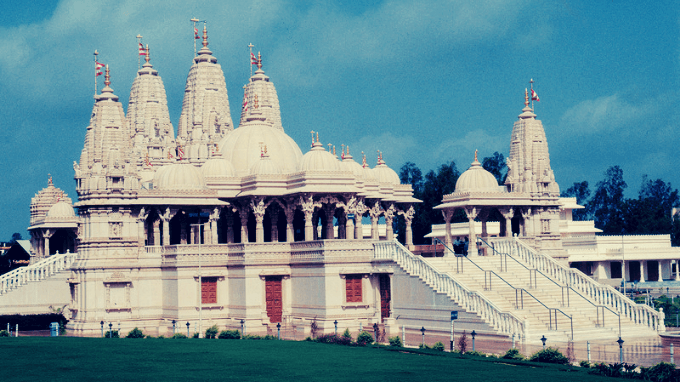
Swaminarayan temple is located in the middle of the city in the Kalupur area of Ahmedabad. The Swaminarayan Temple at Kalupur is one of the earliest temples built by Swaminarayan sampraday in 1822. The Swaminarayan sampradaya has built five more temples to install deities’ images in other parts of the state.
If you are visiting Ahmedabad, then this is the must-see place for you. You will witness the architectural masterpiece and will admire the perfect blend of Rajasthani, Marathi, Gujarathi, and the British style of architectural designs. The colorful carvings and unique sculptures fascinate every visitor.
The Ahmedabad municipal corporations also organize a Heritage walk which starts from Swaminarayan temple and covers more than 20 essential locations in 3-hour duration of the walk.
The temple is open from 6:00 am to 7:00 pm for the visitors. Darshan is closed from 10.15 am to 11.15 am and 6.15 pm to 7 pm as it is the time of Bhog.
Morning Prayer: Several devotees attend the Morning Prayer service, which connects them to divinity. Different artist or the ritual form of offering with lighted lamps is done as per the below schedule:
Mangla Aarti – 5.30 am
Shankar – 8.05 am
Rajbhog – 10.10 am
Sandhya – 7.00 pm
Shayan – 8.00 pm
Other Facilities: Multi-storeyed guesthouse and a medical clinic
Akshardham Temple
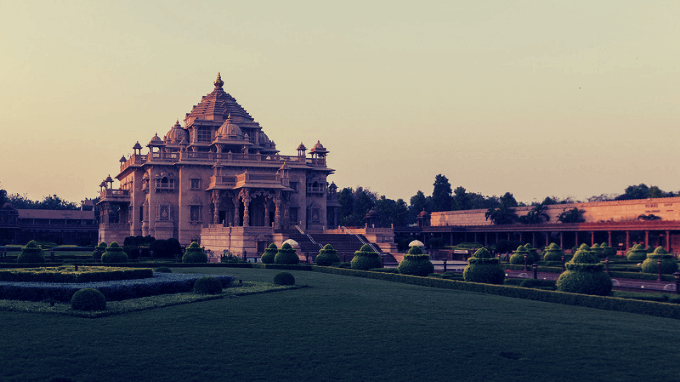
Ahmedabad being a World Heritage City today has a strong influence of religion on its culture.
Ahmedabad proffers plenty of religious and historical sites. Travelers would be fascinated with the awe-inspiring architectural heritage sites located in the city that dates back centuries. One of the city’s most incredible spectacles is the Akshardham Temple, an important temple of the Swaminarayan Sampraday. It is estimated that the temple is visited by around two million tourists annually.
The word Akshardham means the divine abode of God, and as the name suggests, the Akshardham temple of Gandhinagar was built to honor Swaminarayan by BAPS Swaminarayan Sanstha. Inspired by the fourth successor of Swaminarayan sampradaya, Yogiji Maharaj, and created by Pramukh Swami, the temple was built in honor of Swaminarayan.
Timings and Fees
Mandir: Entry to the temple is free, and timings are from 9:30 am to 7:30 pm. Arti is performed at 10:00 am and 6:00 pm.
Exhibition: Visitors can visit the Exhibition Halls anytime between 10:00 am to 5:30 pm. Entry fees are Rs. 60 for Adults (more than 11 years of age) and Rs. 40 for Children between the age of 3 years to 11 years. There is no entry fee for children below three years of age.
Sat-Chit-Anand Water Show: The Sat-Chit-Anand Water Show starts at 7:30 pm. Multiple shows may be held on weekends or public holidays. Entry fees for Sat-Chit-Anand Water Show are Rs. 90 for Adults (more than 11 years of age) and Rs. 60 for Children between the age of 3 years to 11 years. There is no entry fee for children below three years of age.
Garden: People can visit the Garden anytime between 9:30 am in the morning till 7:30 pm in the evening. There is no entry fees for visiting the garden.
Important Things To Note
Items permitted within the premises: Visitors can carry their wallets, drinking water, baby food, passport, belts, and wallets within the premises.
Items not permitted within the premises: Visitors cannot carry USB Drives, Music Devices, Electronic devices, Weapons, Cameras, Luggage, Mobile Phones, Food items, and Alcoholic drinks.
Points to be noted: As it is considered a sacred place of worship, visitors are expected to remove their shoes outside and maintain silence within the premises. No food or drinks are allowed within the temple.
Gujarat Science City
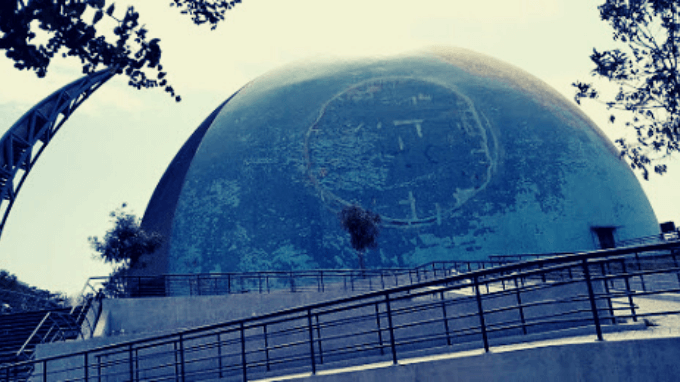
The Gujarat Science City (or merely a Science City called by the locals) is an initiative by Gujarat’s government to spread science and encourage scientific temperament among Gujarat communities.
Today’s fast-paced situation demands some understanding of basic science and a lot more of the scientific outlook, and hence this initiative has been a preference for a long. And this was soon realized in May of 2009 when Gujarat Science City was established.
This Science City has been developed to promote education with a blend of entertainment for the commoners. It hosts a fantastic center with creative and educational yet modern displays of labs, operating models, engaging activity corners, and pragmatic reality with live demonstrations to understand science and technology.
Important Sections of the Gujarat Science City
- IMAX Theatre
- Electrodome
- Hall of Space & Science
- Amphitheatre
- Expo Ground
- Children Activity Centre
- Restaurants
- Planet Earth
- Life Science Park
- Energy Park
- Musical Fountain
- Thrill Ride
- Auda Garden
There is a map provided with directions to these locations, and We recommend you to spend at least 6-7 hours over here and visit during the second half of the day to cover evening events.
Adalaj Step Well
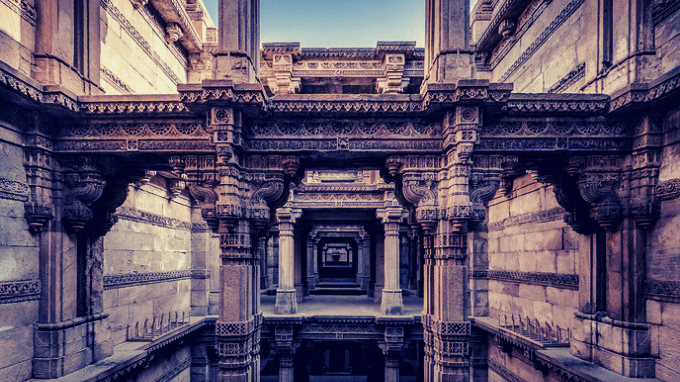
Stepwells or the stepped lakes were generally built in semi-arid regions of the country, especially trade routes. People often used these structural sites to store monsoon rains and utilized several travelers and traders passing through this place as their resting place.
Being an essential part of Ahmedabad’s History, Adalaj Step Well was commissioned by famous queen Rudabai, Vaghela dynasty’s Rana Veer Singh, in 1498. He was the ruler of a small kingdom denoted as Dandai Desh.
According to legends, the kingdom faced an acute shortage of water and resolved the same; king Rana Veer Singh decided to build a big stepwell. However, the king could not complete it, as he died in a battle with Mahmud Begada.
Mahmud Begada fell in love with queen Rudabai and desired to marry her. However, the queen agreed to the proposal provided Mahmud complete the construction of the stepwell. After completing the vav, She then fell into the vav and died.
An inscription written in Sanskrit on a marble slab on the first floor indicates this fantastic architectural site’s history. It states that the cost of construction was around 5,00,111 tanks or five lakhs.
Timings And Fees
You can visit Adalaj ni Vav between 6 am till 6 pm, and there are no entry fees for visiting the stepwell.
Sabarmati Riverfront
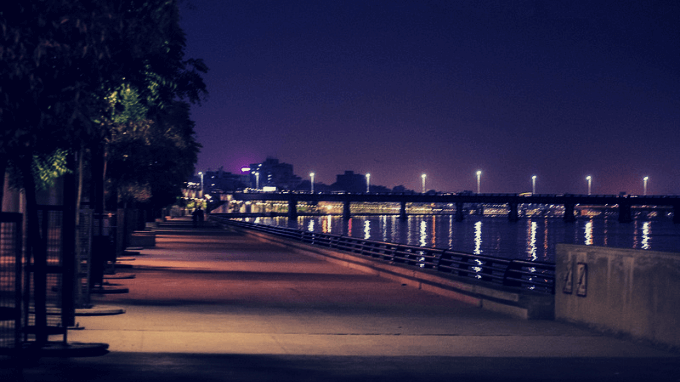
Although Mr. Bernard Kohn proposed the riverfront in 1966, the govt started work in late 1999 when it was feasible. The total cost of the project is around 1200 crores and funded by the Gujarat government.
The Sabarmati Riverfront is the perfect tourist spot any way you look at it; from the tourist’s perspective, you have a beautiful riverfront that offers a wide range of activities that will keep you occupied all day.
Sabarmati Riverfront is over 10 km long and provides a spectacular view of the river and the life on both sides of Ahmedabad city. Being a beautiful place to get rid of apathy and fatigue, the riverfront also has ghats for boating on Sabarmati and other water-related activities.
You can spend a peaceful time along the river or take water rides. The riverfront is also famous for the flower garden and Sunday market.
Hutheesing Jain Temple
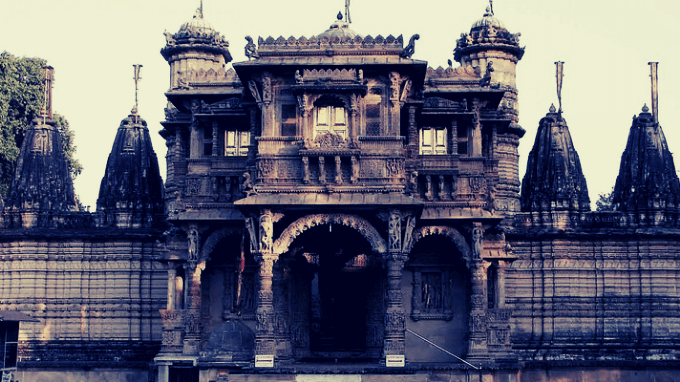
Situated near the Swaminarayan Temple, Hutheesing Jain Temple is a two-story structure devoted to Lord Dharmnath. He was the 15th Jain Tirthankara – a religious leader. It was built by a prosperous merchant Seth Hutheesing; the temple houses eleven deities. Its architecture is constructed using white marble, and it stands steady on the twelve eloquently beautified stone pillars.
This serene complex has a tiled courtyard lined by 52 shrines. These shrines are dedicated to different Tirthankaras, all elegantly created and engraved. The place is also called Hutheesing Jain Derasar, and it’s among the top places to visit in Ahmedabad.
The complex also has a 78-feet high magnificent Manastambha, inspired by the Kirtistambha at Chittore in Rajasthan. It was built in 2003 to commemorate the birth anniversary of Lord Mahavira.
Indroda Dinosaur and Fossil Park
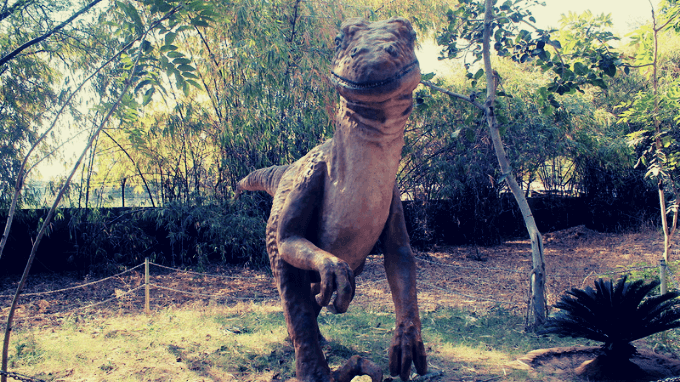
Indroda Dinosaur and Fossil Park is a refined treasure spread over 400 hectares on either bank of Sabarmati river in Gandhinagar, the Gujarat capital. Indroda Park is regarded as India’s Jurrasic Park; it is run by the Gujarat Ecological Education and Research Foundation (GEER) and is the only dinosaur museum.
The park consists of a zoo, massive skeletons of sea mammals like the blue whale, and a vast botanical garden, amphitheater, interpretation center, and camping facilities. It also has a Wilderness Park, home to innumerable species of birds, reptiles, hundreds of nilgais, langurs, and peafowls in its vast forest.
Sanskar Kendra Museum
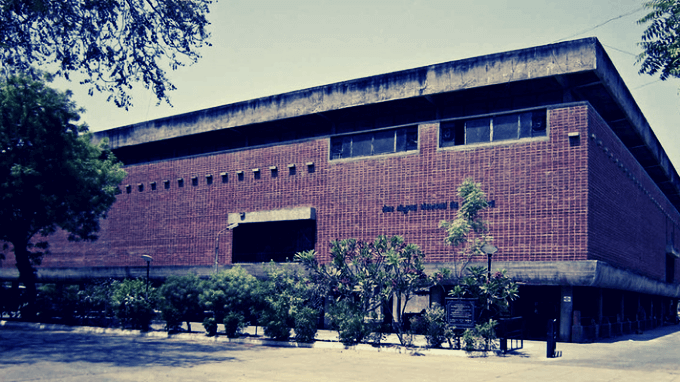
Sanskar Kendra is essentially made up of two separate museums: the City and the Kite Museum (or the Patang Museum).
The Museum of the City
The city’s museum centers around the city’s historical, cultural, economic, and political aspects by collecting exquisite art and artifacts of importance to the city and historically important documents.
But that’s not all; the museum claims that it had successfully preserved the history of Ahmedabad from a time when it wasn’t even called Ahmedabad! Yes, the museum has records and exhibits that go way back to the 11th Century when the city’s time was “Ashval.”
The Patang Museum
The second part of the museum, as the name suggests, is solely devoted to the long-standing sub-continental tradition of kite-flying, known to hold some spiritual meaning for the people of the sub-continent.
Calico Museum
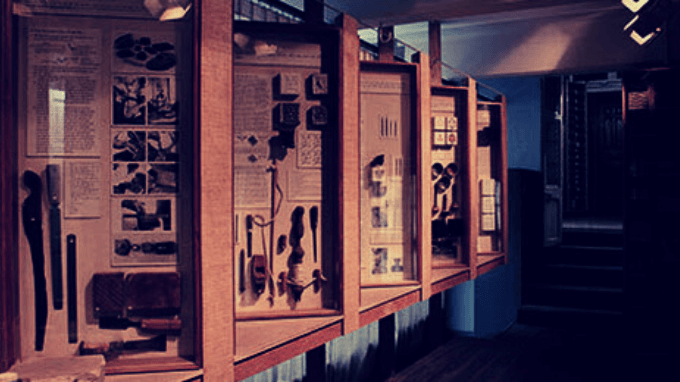
Surrounded by spacious and well-managed gardens, the Calico Museum is one of the country’s oldest textile museums. It is founded by a businessman, Gautam Sarabhai, and run by the Sarabhai Foundation. This museum has an elite collection of textiles and fabric designs. It also consists of artifacts, handicrafts, and paintings brought from different parts of the country.
The entire textile exhibition is scattered across 12 rooms and divided into royal and historic fabric, and the other has religious clothing.
The vital section exhibits textiles used in costumes, carpets, and other items used by the rulers and courtiers between the 15th and 19th centuries. The religious collection has crafts related to rituals, religious clothes, and temple decor, among others. Miniature paintings, bronze objects, and antique furniture are also on display in Calico Museum.
Apart from being one of the famous tourist places to visit in Ahmedabad near Sabarmati Ashram, this museum also attracts plenty of scholars and researchers. They see the site to explore the history of textiles and get into the details. The museum houses galleries giving information about various techniques and also a library. Museum authorities organize workshops to help enthusiasts learn more about textiles, and in a better way.
Sabarmati Ashram
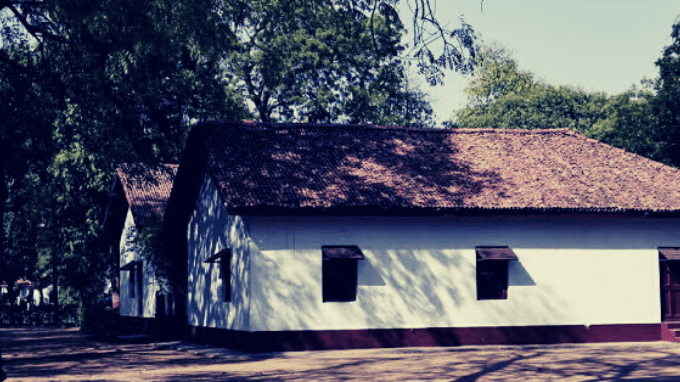
Sabarmati Ashram is a serene abode on the banks of the Sabarmati River. As a place that testified the initiation of many freedom movements and Mahatma Gandhi spent some of his notable years, this Ashram is a significant landmark of Ahmedabad. It stands as a testimony to the efforts of Mahatma Gandhi during the pre-Independence era.
The Ashram today serves mainly as a museum and is divided into different sections depicting different parts of Gandhiji’s life. The exhibition consists of paintings and photos highlighting various events. You can also see some of the letters exchanged between him and other prominent personalities of the time.
The ashram complex houses a library, photo gallery, and Hriday Kunj – Mahatma Gandhi’s cottage, and the museum. It has been maintained well and exhibits many of his personal belongings, including the iconic spinning wheel. Sabarmati Ashram also has Vinobha Mira Kutir, Udyog Mandir, and Upasana Mandir, among other spots. The place is about 7 km from the railway station and the airport.
If you’re interested in knowing more about Mahatma Gandhi’s life, don’t forget to visit the library there. It has a vast collection of books related to his life and other events around freedom movements. The library also stocks various periodicals printed in English, Gujarati, and Hindi.
Sabarmati Ashram has been divided into separate sections: Magan Niwas, Hriday Kunj, Gandhi Memorial Museum, Vinobha Mira Kutir, Udyog Mandir, and Somnath Chhatralaya and Upasana Mandir.
Magan Niwas
Named after the close associate and nephew of Mahatma Gandhi, Maganlal Khushalchand Gandhi recommended the word Satyagraha to denote Gandhi’s nonviolent ways of the freedom struggle the story Satyagraha where sat means truth and agraha means firmness.
Hriday Kunj
Stepping into the Hriday Kunj will introduce the visitors to the life of Gandhiji and his wife, Kasturba Gandhi. Hriday Kunj has six rooms, including Gandhiji’s room, Kasturba Gandhi’s room, a guest room, a kitchen, a storeroom, a secretariat, and a venue Gandhiji used to meet many national and international dignitaries. Hriday Kunj features replicas of his artifacts.
One can find things like his khadi kurta, yarn spun by Gandhiji himself, and his writing desk. More renowned as Bapuji, Gandhiji used to meet essential people in Hriday Kunj. He left the Ashram on Dandi March and took a vow to return to the Ashram only after acquiring Independence.
Gandhi Memorial Museum
An impressive museum throws light on the life and teachings of Mahatma Gandhi. It showcases eight life-size paintings and photos narrating the historical events in Gandhi’s life. Designed by Charles Correa, the museum was inaugurated by Jawaharlal Nehru on 10th May.
The informative museum has three galleries, including Gandhi in Ahmedabad Gallery, Painting Gallery, and My Life is My Message Gallery. Travelers gain an insight into the life and accomplishments of Mahatma Gandhi.
Vinoba Mira Kutir
One of the key highlights of the Sabarmati Ashram is the Vinobha Mira Kutir, named after Acharya Vinoba and Gandhi’s disciple and the daughter of a British Admiral named Miraben.
Udyog Mandir
Established in 1918, Udyog Mandir played a vital role in supporting Swaraj through the Khadi movement. Khadi referred to a cloth that is hand-spun or hand-woven. He promoted the Khadi movement, which worked as a symbol of self-reliance and self-governance.
Somnath Chhatralaya
Step into Somnath Chhatralaya, a place where the students of the Ashram and the participants of the Swadeshi and Constructive Work Training Programmes lived. The building had around a hundred rooms where the guests stayed, following ashram rules.
Upasana Mandir
Set in between Hriday Kunj and Magan Kutir, the Upasana Mandir is an open prayer area where Gandhiji held prayer services for all. Gandhiji selflessly devoted his life to the freedom struggle and preached Bhagavad Gita at the Mandir. He is said to have prayer sessions both morning and evening.
Nandini
Nandini is the guest house built next to Hriday Kunj, where influential people used to stay. Significant freedom fighters who remained in the place include Rabindranath Tagore, Pandit Jawaharlal Nehru, Maulana Abdul Kalam Azad, Babu Rajendra Prasad, Reginald Prasad, Henry Polak, and Deena Bandhu C.F. Andrews.
Entry Fees and Timings
The Ashram is open from 8.30 am till 6.30 pm all day.
Sidi Sayed Mosque
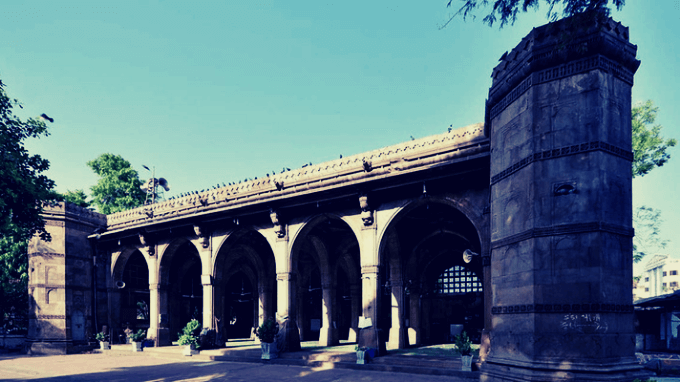
The Sidi Sayyed Mosque is one of the famous mosques in Ahmedabad and is known for its elegant architecture. Sidi Sayyed built it in 1573 while serving in the army of Shams-ud-Din Muzaffar Shah III. It is made in Indo-Islamic style, using yellow sandstone, and is famous for its carved windows with stone latticework.
The panels’ work is so subtle that the place is popularly called Sidi Sayyed ni Jali locally. The most detailed of those carved windows represents tree foliage and its branches intertwining to form a mesh-like structure is proof of the creative skills available during those times. The beauty of this mosque draws art enthusiasts and history buffs alike. And you must not miss Sidi Sayyed Mosque if you’re looking for places to visit in Ahmedabad.
Timings and Fees
The mosque is open all days from 7 am till 6 pm. There is no entry fee to visit the sacred shrine.
Jama Masjid
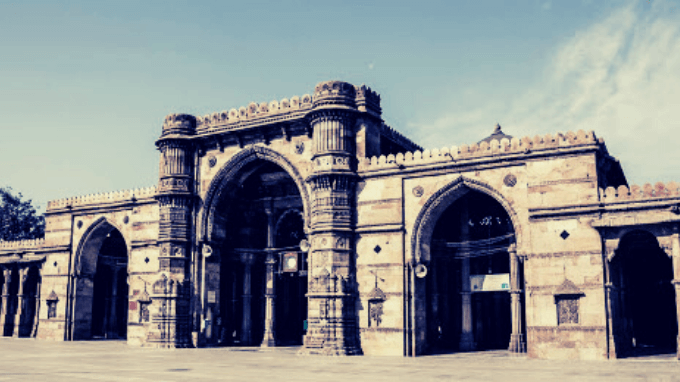
The Jama Masjid (also called Jumma Masjid) is a sacred mosque and one of the unique places to visit in Old City Ahmedabad. Built by Sultan Ahmed Shah, the city’s founder, the mosque stands firm upon 260 beautifully carved pillars. Once there were two beautiful minarets near the main gateway, but they collapsed in an earthquake.
This place is at a range of 2 km from the railway station.
Near the eastern entry to the mosque is the tomb of Sultan Ahmed Shah. This memorial has the graveyard of Ahmed Shah I. Two other rulers – Mohammed Shah and Qutub-ud-Din Ahmed Shah II are also buried there. They are the son and grandson of Ahmed Shah I, respectively. The tombs of his queens are across the main road, marked by Rani-no-Hajiro.
Jama Masjid reflects the Indo-Islamic style of design and has been constructed primarily with yellow sandstone. There are three entrance gates, bringing you to a courtyard, one side bordered by the main prayer hall. The yard has a small pond in the center.
The meshwork in the prayer hall is a design marvel in itself. It allows natural illumination in the room without the entry of direct sunlight. Apart from beautiful Islamic-style decorations, elaborate carvings on the walls, pillars, and domes are symbolic of Hinduism and Jainism.
Remember to cover your head and remove your shoes before entering the prayer hall.
Entry Fees and Timings
There is no entry fees for visiting Jama Masjid, and it can witness anytime between 6 am till 8 pm.
Teen Darwaja
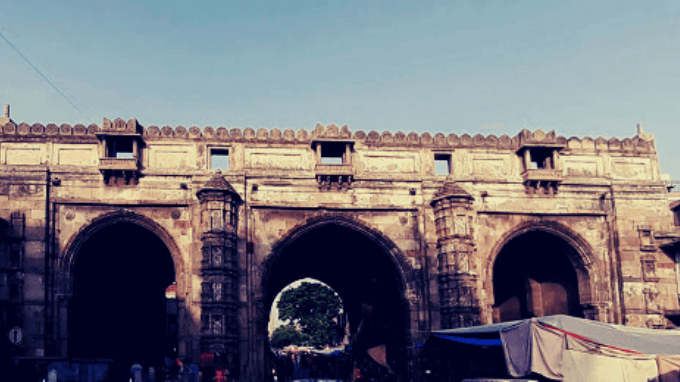
The founder of the city, Ahmed Shah, built this gateway, which stands out to be the longest and oldest gateway of Ahmedabad a 600 years old city. It is said that King Jahangir used to cross around Teen Darwaza to watch the procession from Teen Darwaza to Jama Masjid.
Myths state that once the Goddess of Wealth, Lakshmi, was about to depart the city when a watchman named Khawaja Siddique Kotwal at the Teen Darwaza pleaded her not to go without notifying the then emperor Ahmed Shah. The Guard convinced her to wait till the Guard returned after meeting the King. The watchman met Ahmed Shah but beheaded himself to make sure that the Goddess remains in the city forever.
Timings and Fees
Teen Darwaza is open for visiting at 9 AM and closes at 9 PM. There are no entry charges.
Auto World Vintage Car Museum
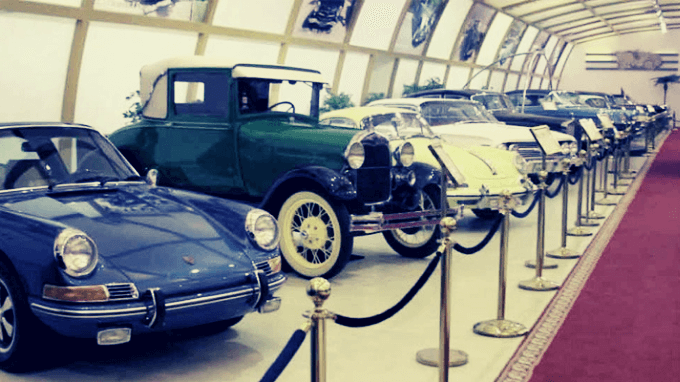
A museum is developed by Shri Pranlal Bhogilal Patel presents a striking presentation of the rare vehicles. Visitors can find a remarkable assemblage of cars, including Bentley, Lagonda, Rolls Royce, Cadillac, Austin, Jaguar, Mercedes, and Auburn.
A vintage car enthusiast was also associated with Western India Automobile Association, and Indian Textiles Association and Machinery Manufacturers. Pranlal Bhogilal Patel’s collection has found a place in the Guinness Book of World Records for his incredible collection of vintage vehicles.
Museum
Tourists would be amazed at the valuable cars’ priceless collection ranging from the 1906 Minerva to 1954 Ford. Car enthusiasts would be delighted to view the diverse range of four-wheeled vehicles. More than a hundred cars are displayed built by well-known coachbuilders, including Hopper, Barker, Gurney-Nutting, Fleetwood, and Lebaron.
Well maintained by Vintage and Classic Car Club of India, the museum is now managed by Director Mr. Nitin Dossa. People who appreciate speed and style would be astounded to see the antiques. One of the arresting displays is the 1923 Rolls 20 HP with a typical shooting brake body by Barker among the best collection of Rolls Royce.
The museum features royal cars belonging to famous rulers of the country. Included in the displays are the renowned brands’ vintage cars, namely, Maybach, Packards, Cadillacs, Mercedes, and Lincolns. This informative museum showcases vehicles of the period when holding a car portrayed as a status symbol.
This impressive museum contains the best collections of Rolls Royce, including 1936 Phantom III, 1937 Phantom III, 1949 Rolls-Royce, 1923 Silver Ghost, and 1927 Phantom I limousine body by Windovers. People can see the Bedford mobile chest clinic with its different interiors. It also accommodates different types of carts.
1923 Rolls-Royce Silver Ghost with its Victoria State Landau body that has gas lamps on its side is one of the museum’s noteworthy highlights. This treasure-trove includes a 1927 Hispano Suiza H6C with coachwork by HJ Muller and cabinets mounted on the running boards for holding shotguns and rifles. A museum filled with treasures appreciated by every visitor where another highlight is the 1937 Maybach SW38.
Entry Time and Fees
Vintage Car Museum is open for visitors from 8 am. The closing time of the museum is 9 pm. The museum is open all days of the week.
Visiting charges for the museum are Rs—100 per person. An exciting feature of the museum is that the visitors can travel a fixed distance of 3.5 km by paying fees of Rs. 100. Visitors will have to pay extra if they want to take their cameras inside the museum.
The photography fee is 100 rs per camera and 500 for digital cameras.
Ahmedabad offers plenty of tourist attractions that one can visit. We at TransRentals, offer Ahmedabad Tour packages that one can opt for at budget-friendly prices. Please Contact Us and we will get back to you.






